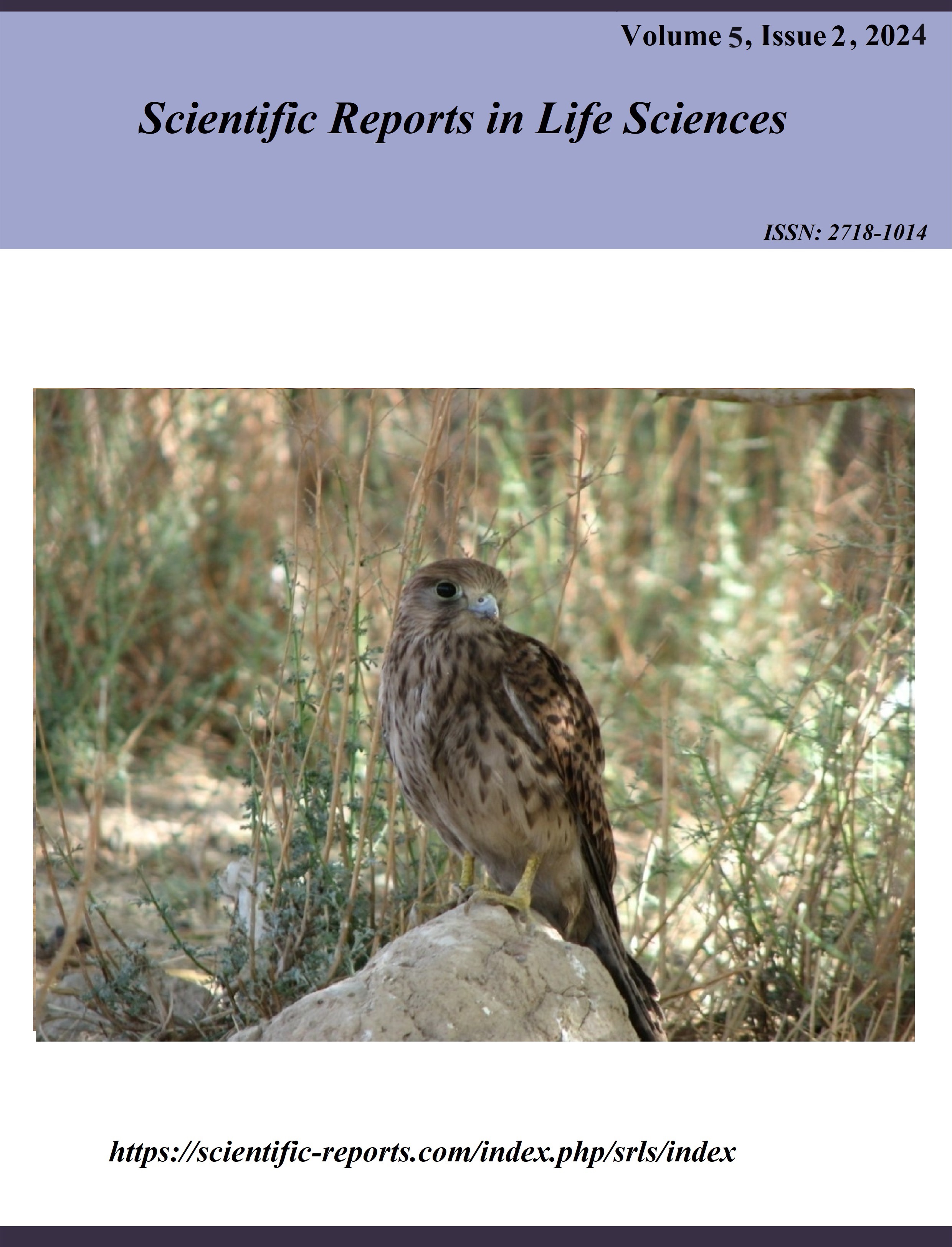Ferns richness along environmental gradients in a tropical forest ecosystem
DOI:
https://doi.org/10.5281/zenodo.11303599Keywords:
Ferns diversity, Microclimate, Muar, Peninsular Malaysia, Tectaria singaporeanaAbstract
The fern species richness assessment was done along environmental gradients in Ayer Hitam forest reserve, Johor, Peninsular Malaysia. This was done to ascertain the distributional pattern of the ferns as influenced by the environmental gradients in this forest. The collection of the fern species was done using a preferential non-random sampling technique. Temperature, humidity, light intensity, and elevation data were obtained at each point of collection of the ferns. The influence of these environmental gradients on the distribution of the species was determined using detrended correspondence analysis (DCA) and general linear model (GLM). A total of 67 ferns were identified at all the study sites. Two ferns namely Asplenium antiquum and Pteris longipinnula were first recorded in this study. In all the sites, light intensity ranges from 337.9 – 8098 lux, temperature ranges from 28.5 - 33oC, humidity ranges from 66.24 - 88.80%, and elevation ranges from 14–33m. Tectaria singaporeana and Nephrolepis biserrata are the only species that are widely distributed across all the study sites. The DCA revealed that the light intensity influences the distribution of the fern species in this forest. However, the GLM showed that temperature had a positive influence on the distribution of the ferns while light intensity had a negative influence on them.
References
Akomolafe GF, Rahmad Z. 2019. Taxonomic Diversity of ferns of Two recreational Forests in Kedah, Malaysia. Malaysian Journal of Science 38(3):1-11.
Chao A, Ma K, Hsieh T. 2016. iNEXT (iNterpolation and EXTrapolation) online: software for interpolation and extrapolation of species diversity. http://chao. stat. nthu. edu. tw/wordpress/software_download. Accessed 21 June 2020
Hemp A. 2002. Ecology of the pteridophytes on the southern slopes of Mt. Kilimanjaro–I. Altitudinal distribution. Plant Ecology 159(2):211-239.
IPNI (2020). International Plant Names Index. The Royal Botanic Gardens, Kew, Harvard University Herbaria & Libraries and Australian National Botanic Gardens. http://www.ipni.org. Accessed 05 June 2020.
Kessler M. 2000. Elevational gradients in species richness and endemism of selected plant groups in the central Bolivian Andes. Plant Ecology 149(2):181-193.
Kessler M. 2001. Patterns of diversity and range size of selected plant groups along an elevational transect in the Bolivian Andes. Biodiversity & Conservation 10(11):1897-1921.
Kessler M, Kluge J, Hemp A, Ohlemüller R. 2011. A global comparative analysis of elevational species richness patterns of ferns. Global Ecology & Biogeography 20(6):868-880.
Kessler M, Salazar L, Homeier J, Kluge J. 2014. Species richness–productivity relationships of tropical terrestrial ferns at regional and local scales. Journal of Ecology 102(6):1623-1633.
Korner C. 2000. Why are there global gradients in species richness? Mountains might hold the answer. Trends in Ecology and Evolution 15:513-514.
Krömer T, Acebey A, Kluge J, Kessler M. 2013. Effects of altitude and climate in determining elevational plant species richness patterns: a case study from Los Tuxtlas, Mexico. Flora-Morphorlogy, Distribution and Functional Ecology of Plants 208(3): 197-210.
Lamichhane R, Pandeya PR, Lee KH, Kim SG, Kandel DR, Jung HJ. 2019. Angiopteris helferiana, a fern with great potential medicinal value: Antiadipogenic, anti-inflammatory, and anti-diabetic activity. Pharmacognosy Magazine 15(63):423.
Linares-Palomino R, Cardona V, Hennig EI, Hensen I, Hoffmann D, Lendzion J, Soto D, Herzog SK, Kessler M. 2008. Non-woody life-form contribution to vascular plant species richness in a tropical American forest. In: Van der Valk A.G. (eds.). Forest Ecology. Springer, Dordrecht.
Othman R, Latiff NHM, Tukiman I, Hashim KSHY. 2015. Effects of Altitude and Microclimate on the Distribution of Ferns in and Urban Areas. Jurnal Teknologi 77(30).
Parris BS, Kiew R, Chung RCK, Saw LG, Soepadmo E. 2010. Flora of Peninsular Malaysia Series I: Ferns and Lycophytes, Volume 1. Malaysia: Forest Research Institute Malaysia (FRIM)
Parris BS, Kiew R, Chung RCK, Saw LG. 2013. Flora of Peninsular Malaysia Series I: Ferns and Lycophytes, Volume 2. Malaysia: Forest Research Institute Malaysia (FRIM)
Parris BS, Kiew R, Chung RCK, Saw LG. 2020. Flora of Peninsular Malaysia Series I: ferns and Lycophytes, Volume 3. Malaysia: Forest Research Institute Malaysia (FRIM)
Piggott AG. 1988. Ferns of Malaysia in colour. Malaysia: Tropical Press SDN. BHD
PPG I, Shmakov A. 2016. A community-based classification for extant ferns and lycophytes. Journal of Systematics & Evolution 54(6):563-603.
Salazar L, Homeier J, Kessler M, Abrahamczyk S, Lehnert M, Krömer T, Kluge J. 2015. Diversity patterns of ferns along elevational gradients in Andean tropical forests. Plant Ecology & Diversity 8(1): 13-24
Sathapattayanon A, Boonkerd T. 2006. Pteridophyte diversity along a gradient of disturbance within mines in Thong Pha Phum District, Kanchanaburi province. BRT Research Reports 2549:1-11
Sharpe JM. 2019. Fern Ecology and Climate Change. The Indian Fern Journal 36:179-199
Warren R, Price J, Graham E, Forstenhaeusler N, VanDerWal J. 2018. The projected effect on insects, vertebrates, and plants of limiting global warming to 1.5 C rather than 2 C. Science 360(6390):791-795
Zuquim G. 2015. Ferns and lycophytes in Amazonia: Diversity patterns and usefulness as habitat indicators (Dissertation). Retrieved from the University of Turku Turku, Finland Repository
Downloads
Published
How to Cite
Issue
Section
License
Copyright (c) 2024 Scientific Reports in Life Sciences

This work is licensed under a Creative Commons Attribution 4.0 International License.




